Pseudovirus deep mutational scanning to map antigenic and functional phenotypes of H5 HA
Jesse Bloom
Fred Hutch Cancer Center / HHMI
These slides at https://slides.com/jbloom/ceirr-sab-2023
Most viral vaccines induce neutralizing antibodies to the viral entry protein
All viruses have one or more entry proteins that bind receptor and then fuse with the cell membrane:
- SARS-CoV-2 spike
- influenza hemagglutinin
- HIV envelope protein
- Lassa virus glycoprotein
- Nipah virus G and F proteins
- RSV G and F proteins
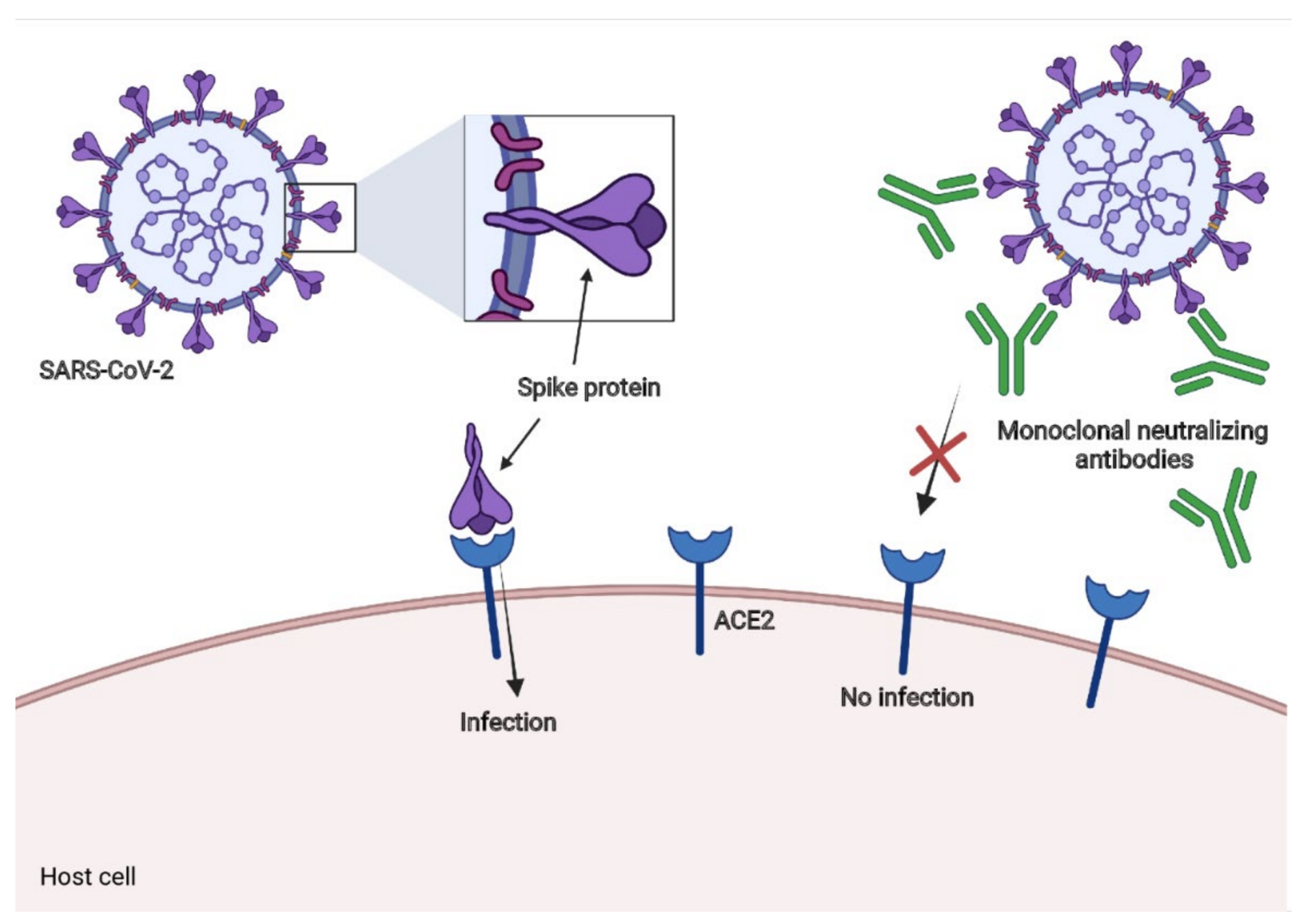
Mutations to viral entry proteins important for antigenicity and host adaptation
For influenza hemagglutinin, we know following molecular phenotypes are important:
- Cell entry: if HA mutant cannot mediate cell entry, it will not be fit
- Antigenicity: mutations to HA affect antibody neutralization
- pH stability: affects host adaptation and transmissibility
- sialic acid specificity: affects host adaptation and transmissibility
Viruses constantly acquiring mutations that could potentially affect these phenotypes
How can we rapidly and safely measure how mutations affect these phenotypes?
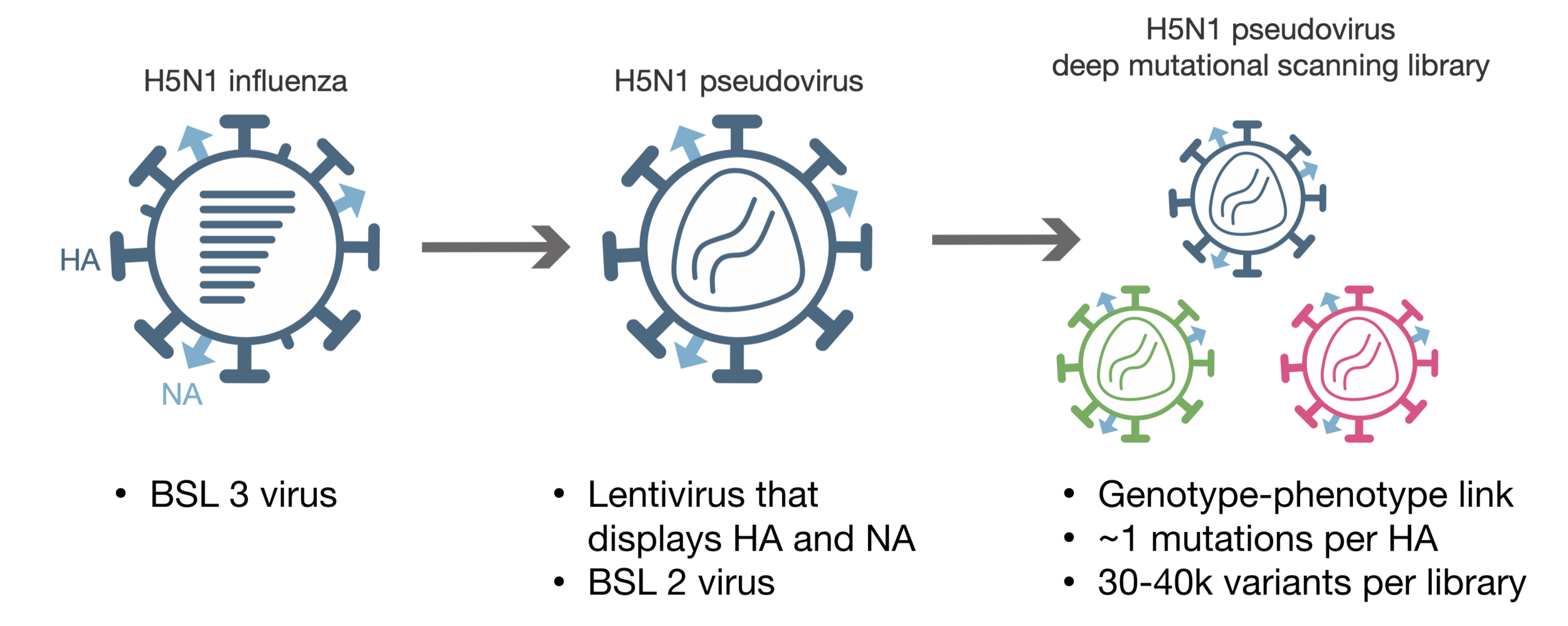
Lentiviral pseudotyping

We can make libraries of amino-acid mutations to HA and assay their effects on cell entry, antibody escape, and stability with minimal biosafety risk
Lentiviral pseudotyping
- Many viruses have entry proteins amenable to lentiviral pseudotyping.
- However, traditional pseudotyping does not create genotype-phenotype link.
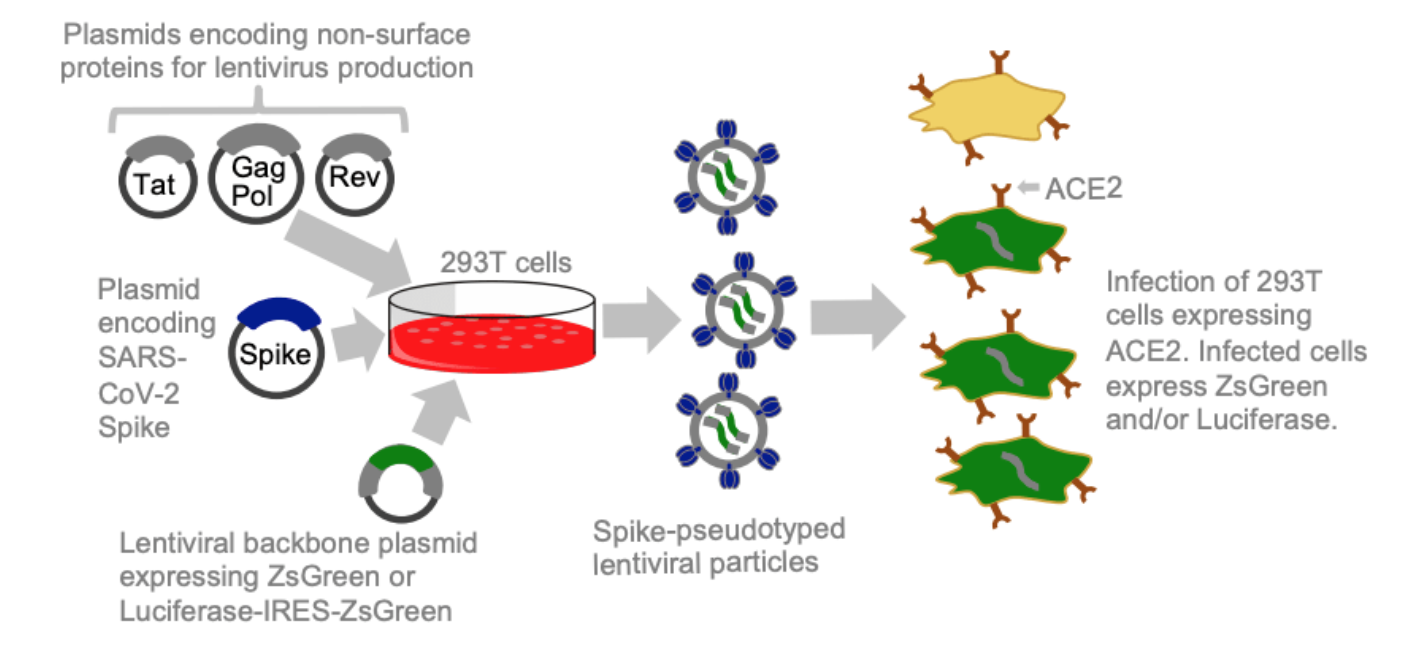
Two-step method to create genotype-phenotype linked spike-pseudotypes
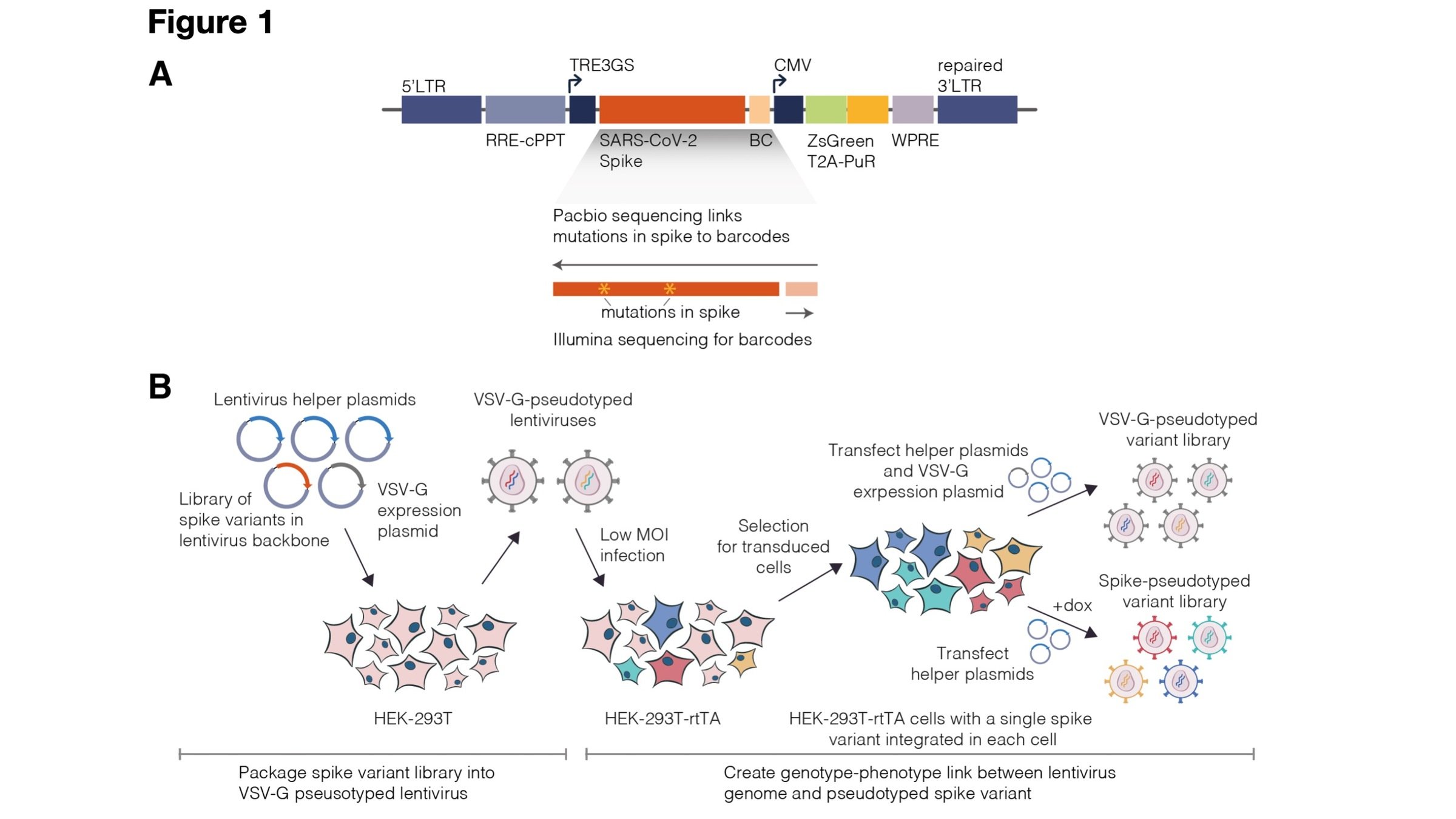
Two-step method to create genotype-phenotype linked spike-pseudotypes

Sequencing measures relative amounts, so include neutralization standard
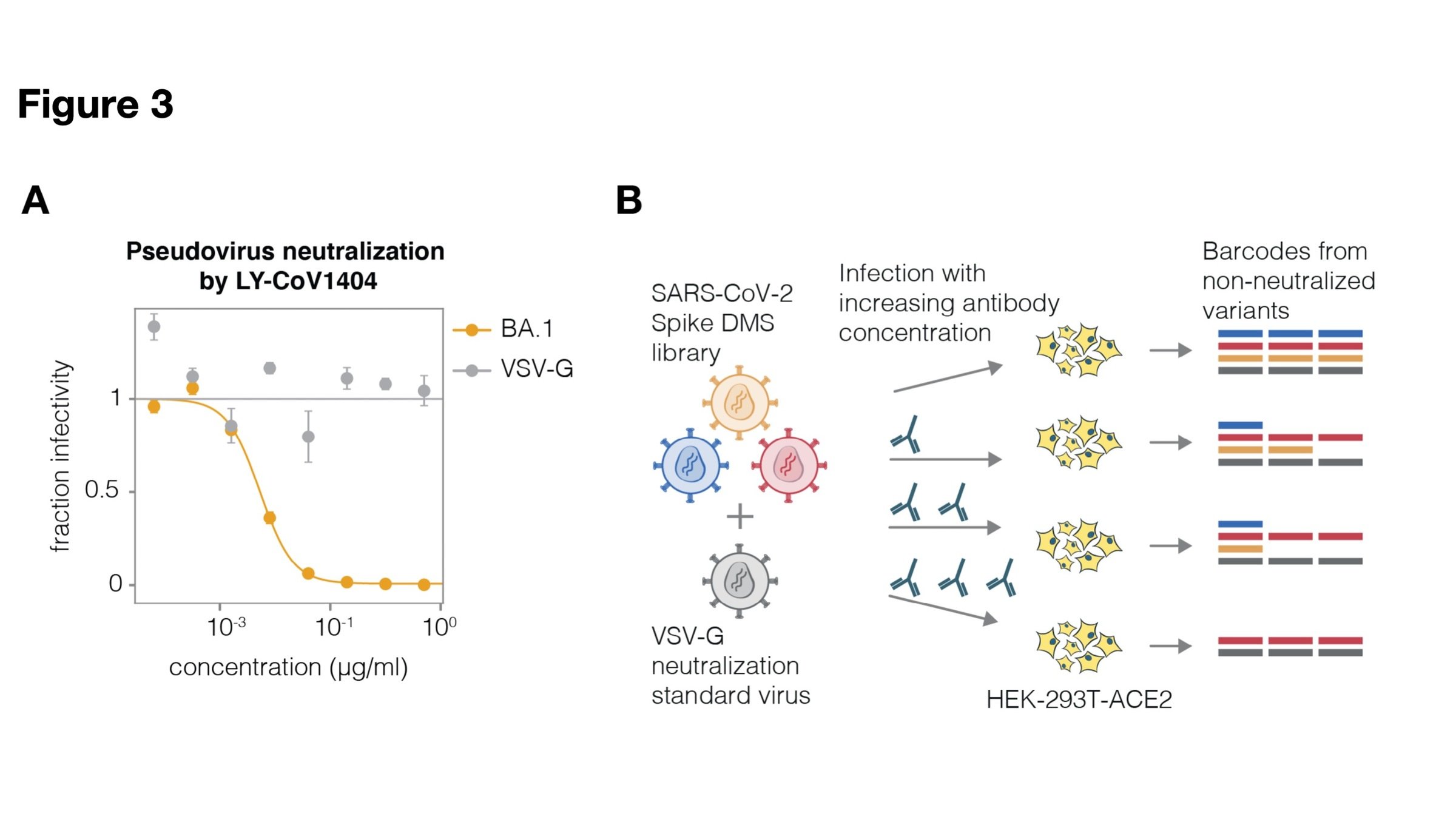
Example: RBD antibody LY-CoV1404
Validates very well
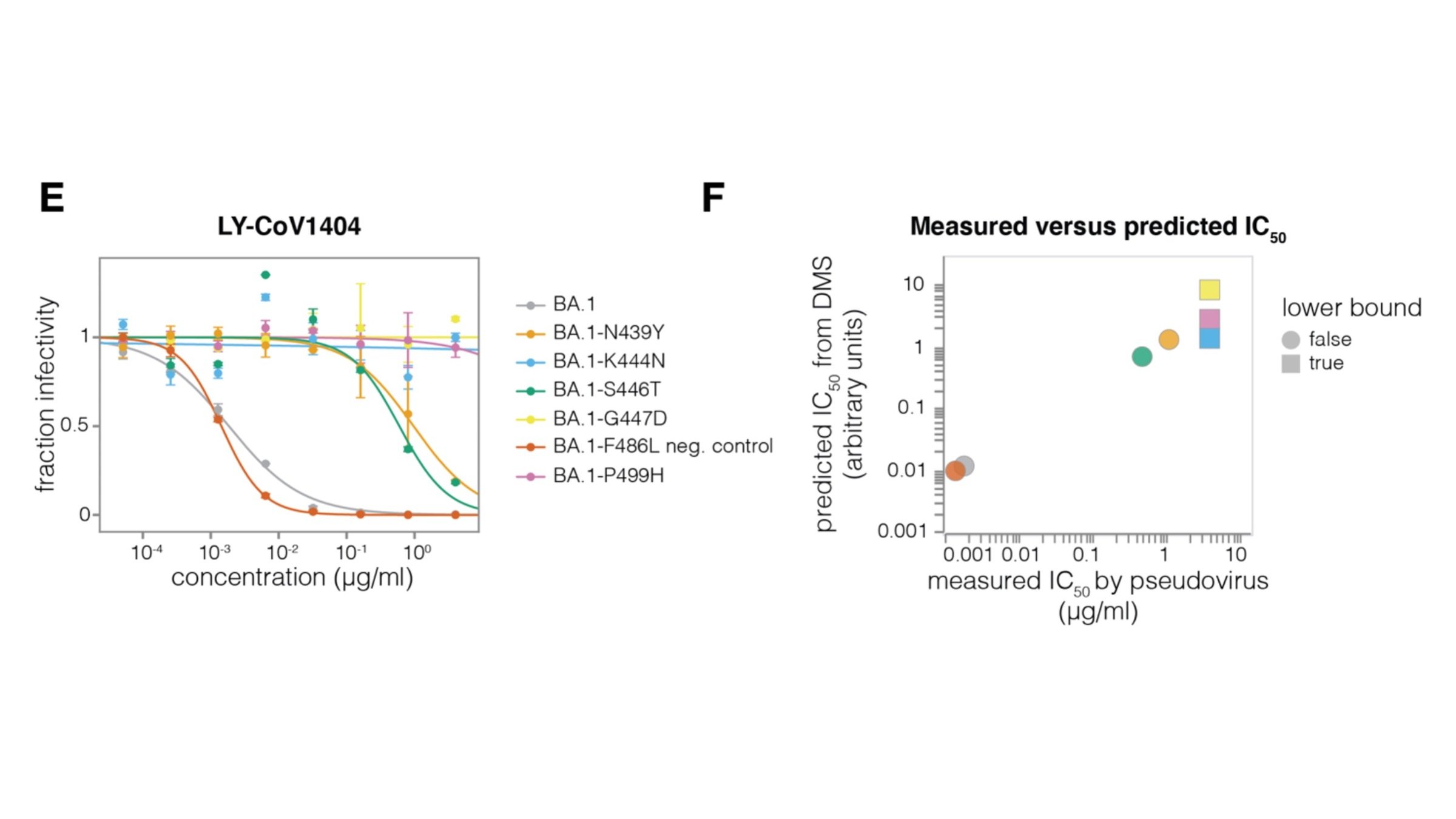
We have now applied the same workflow to a 2022 strain of avian H5N1
Real-time interpretation of viral evolution
Knowing effects of all mutations to H5N1 hemagglutinin can help:
- Identify conserved sites that can be targeted by antibodies
- Map escape mutations for candidate antibodies
- Inform design of immunogens and candidate vaccines
- Enable identification of natural mutations that affect stability or antigenicity
Bloom lab
Bernadeta Dadonaite
Kate Crawford
Caelan Radford
U Penn
Louise Moncla
Jordan Ort
Scott Hensley
Pirbright Institute
Thomas Peacock
St. Jude
Richard Webby




Thanks

